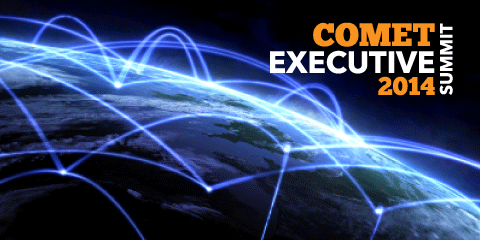Transforming the Network and the Planet
By: Jesse Cryderman

When Facebook reported its energy use in 2013, most writers and analysts focused on the company’s use of sustainable energy alternatives, its collaboration with the Open Compute Project, and its carbon footprint. However, a comparison with 2012 usage reveals a surprising fact: Facebook consumed 33 percent more energy in 2013 than it did in 2012. Turns out that all those likes and photos and comments and check-ins have a substantial material cost. What’s more, Zuckerberg’s modern money machine uses more coal and gas than every other energy source combined. Now, Facebook is at the forefront of energy efficiency, so if Facebook is seeing energy costs jump 33 percent, what’s happening at Ma’ Bell?
The Information and Communication Technology (ICT) space has an addiction. It’s not an addiction to wealth, or in-app advertising, or new devices, but to something much more basic, and made of the same essential element that characterizes life on earth. The industry has an addiction to coal; and, like any addiction, the outcomes look grim if no changes are made. If you’re surprised, don’t be—here’s how it happened.
The meteoric growth of the digital world has catapulted ICT into the limelight as the hungriest energy consumer on the planet. Global communications networks use 350 billion Kwh per year, which translates to about $63 billion per year. The industry requires more energy per square foot than any other, and for every $2 spent powering a typical service provider’s central office, $1 is spent on cooling. The numbers are rising at an unbelievable rate. By way of comparison, ICT consumes 50 percent more energy than aviation, and while both industries are experiencing growth, the energy demand in ICT is exploding.
About CES 2014
Pipeline continues its legacy of bringing together the world’s leading service providers and technology innovators this fall at The 2014 COMET Executive Summit. This exclusive event
gathering Pipeline journalists, Industry Advisory Board (IAB) Members, and key solution providers will be an intimate symposium to shape the editorial direction of Pipeline, gather
priceless input from executive-level service provider experts, and create lasting industry relationships.
Pipeline’s IAB is an exclusive group of service provider and analyst executives who have long-term relationships with Pipeline and have played a role in Pipeline programs, editorial
direction, and provided content over the last decade. This year, Pipeline opens the doors to provide an opportunity to engage directly with a broad cross section of experts who
evaluate, recommend, and purchase communications and entertainment technology (COMET) products and services. Multiple levels of participation provide your company with an exclusive
networking opportunity, tailored to your goals and budget.
The COMET Executive Summit will bring together executives from the world’s leading service provider and technology companies, in a flexible format that is filled with unprecedented
networking opportunities designed to build relationships that can be carried forward to solve issues facing service providers today. Some of the topics planned for discussion
include:
- Networking
- Customer experience management (CEM)
- Big data & analytics
- Exploring cloud offerings
- Enabling new business models
- Delivering and assuring digital services
- Network evolution & virtualization
- Leveraging content
- Network security
For more information, visit
www.pipelinepub.com/info/comet/2014_comet_summit.php
This explosion is the result of many factors, from pervasive wireless connectivity, to the growth of cloud computing, to the Internet of Things (IoT) to the types of media people consume and how that consumption is characterized. Every day, millions of more bits and bytes are shuttled around our networks than the day before, and this is a trend with which we must get comfortable. Ultra-high-definition 4K video offers a good example. With files sizes of 40GB or more, a handful of movies streamed in 4K could easily tap out the data caps put in place by many internet service providers. We will see the same thing happen in online gaming as well; as games move to ultra-high-definition, the data demand will, again, skyrocket.
Is this sustainable? If Facebook’s data is any indication, the answer is no.
“Let’s go green!” one might say (I confess I am an ardent supporter of all things green and Pipeline is a Green Publisher). Green energy, while philosophically appealing and environmentally responsible, is not keeping up with the increased demand—not by a long shot. In fact, despite advancements and innovation in sustainable energy solutions, such as solar and wind, “Growth of coal-fired power generation exceeds that of all non-fossil fuels combined,” writes the International Energy Agency (IEA). “These trends reflect inadequate political and financial commitment to long-term sustainability of the global energy system.”
In other words, wind turbines and solar panels aren’t the solution to the ICT industry’s coal addiction. What is needed is a new beginning, an intervention if you will, and it starts with a transition from legacy communications network infrastructure to all-Internet Protocol (IP).
One of the most viable answers lies in the way in which networks are designed, built, operated, and cooled. A significant opportunity exists: reduce the consumption side by transforming our global networks to modern, IP-based architectures. Network transformations of this sort offer tremendous cost savings by dramatically reducing power consumption and real estate footprint, and simultaneously open the door to new revenue generation. Today, there are even solutions on the market that can help operators initiate a network transformation with no upfront cost.




















